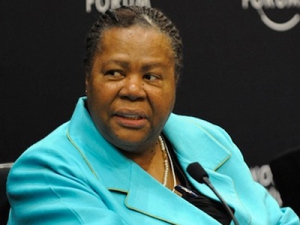 If new developments in information communications technologies (ICT) are the bridge for the digital divide, what is the content — and, more importantly, the quality of it — that is going to be delivered?
If new developments in information communications technologies (ICT) are the bridge for the digital divide, what is the content — and, more importantly, the quality of it — that is going to be delivered?
This question, at the heart of developing any ICT4Education program, seemed more relevant and crucial yesterday while listening to US Under Secretary of Education, Martha Kanter, give her keynote speech at the Open Source Higher Education event at the Center for American Progress here in Washington, DC.
Kanter clearly understands the potential value and opportunities for open educational resources (OER) as well as the government’s role in facilitating and monitoring their use. A long standing advocate for open education and government policies to make it sustainable, she and a panel of experts from several universities and OER interest groups discussed how these resources can impact the affordability and access to education in the US.
Giving a brief description of the current OER field, External Relations Director at MIT OpenCourseWare (OCW), Steve Carson, used The Hewlett Foundation’s definition of OER as “high-quality, openly licensed, online educational materials that offer an extraordinary opportunity for people everywhere to share, use, and reuse knowledge.” MIT’s OCW Consortium, a community of over 250 universities that offers roughly 17,000 courses in 20 languages, is just one of several examples of how institutions and education professionals are using this technology to build networks and pool information and resources that can be continually reviewed and revised, essential to setting high standards for the quality of the materials.
 But how are OER programs and policies affecting the developing world? Sally Johnstone, Vice President for Academic Advancement at Western Governors University, spoke about a few exciting new initiatives such as the UNESCO/Commonwealth of Learning (COL) Guidelines on Open Educational Resources (OER) in Higher Education, a new framework for using OER in appropriate ways. UNESCO has also created an OER Wiki allowing the global OER community to share and collaborate on developing new resources, as well as an innovative OER Platform for sharing resources between teachers, learners, and education professionals.
But how are OER programs and policies affecting the developing world? Sally Johnstone, Vice President for Academic Advancement at Western Governors University, spoke about a few exciting new initiatives such as the UNESCO/Commonwealth of Learning (COL) Guidelines on Open Educational Resources (OER) in Higher Education, a new framework for using OER in appropriate ways. UNESCO has also created an OER Wiki allowing the global OER community to share and collaborate on developing new resources, as well as an innovative OER Platform for sharing resources between teachers, learners, and education professionals.
In addition, Johnstone mentioned OER Africa, an revolutionary initiative and first of it’s kind in the region which was established by the South African Institute for Distance Education (SAIDE). Focusing on agriculture, health education, foundation courses, and teacher education, the program supports and develops digital materials to increase equitable and meaningful access to knowledge, skills and learning across the African continent.
It was clear by the end of the panelist’s discussion that open education is changing the way that classes and textbooks are being developed and accessed in America. However, some issues still need to be addressed such as creating standard quality evaluation techniques and developing policies for a sustainable market. The US government has already taken a step in this direction when the Department of Labor and the Department of Education created an education fund in January 2011 that would grant $2 billion to create OER materials for career training programs in community colleges.
Perhaps with more government initiatives such as this, as well as guidelines that encompass both OER and ICT technologies, open education will create more networks and cross more borders to make education accessible on a global scale. When discussing the government’s role in open education, Under Secretary Kanter quoted president Obama from a speech he gave at Macomb Community College in Michigan in 2009. “Even as we repair brick and mortar buildings, we have an opportunity to build a new virtual infrastructure to complement the education and training community colleges can offer. We’ll support the creation of a new online – and open-source – clearinghouse of courses so that community colleges across the country can offer more classes without building more classrooms.”



















































